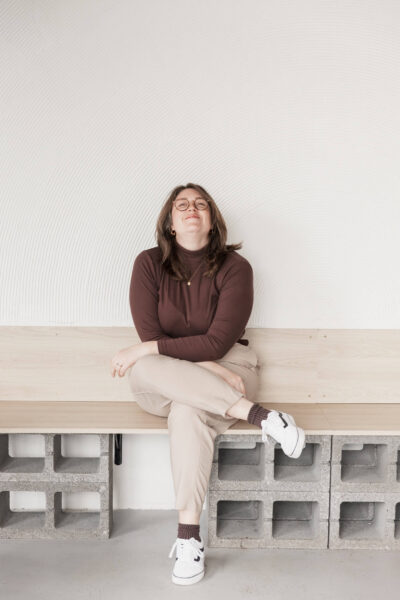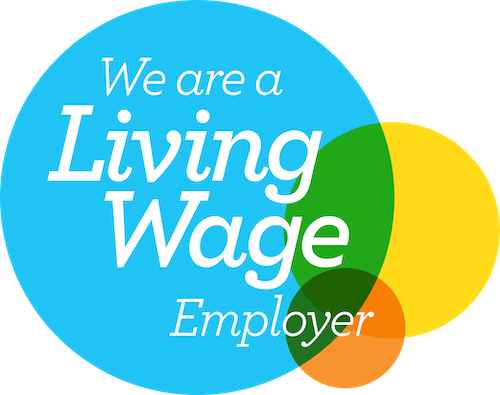We like you, so we totes want you to get the most out of your small business investments, especially when it comes to a professional website. They can be pricey – anywhere from £2000 to about £15,000 – and in spending that money on a brand spanking new website, you might think it’ll immediately solve lots of issues that you had on your old one.
Ok, we don’t want to dishearten you, but a website upgrade does not equal guaranteed success. A new website is not a magic wand, sadly. I mean, as a web design company we really wish it was – then we’d be swimming in pound coins like Scrooge McDuck.
Investing in a new top of the range professional small business website is a big ol’ deal, and a big ol’ chunk of money, so we wanted to share this info to help you to make the most out of it – which means understanding 6 things a new website can’t fix for your small business.

1. Lack of website management time
Just like human beings, all websites need to be regularly maintained, and if a small business owner doesn’t already have time in their schedule to dedicate to making the most out of their current/DIY website, they probably won’t find the time after a new website is built.
Maintenance is essential for making sure your website looks as professional as possible and contains all of the information your customers need. There’s also an added bonus because all of these updates are really good for search engine optimisation (SEO), which helps you maximise the volume of traffic and relevance of that traffic to your small business.
Website maintenance includes uploading products/services, making tweaks for SEO, uploading new brand and product photography, adding blog articles or podcast episodes and switching up your content and offers with the seasons.
A brand new website won’t be able to fix the problem of not having enough time, but here’s our suggestions for lightening the maintenance load.
6 ways to get website maintenance done
- Be up front with your website designer on how much time you can spend maintaining each month
- Pop time in your calendar for monthly website maintenance
- Schedule time for website content creation too, just like for social media
- Look into virtual assistance (VA) services that can help with website management
- As well as website content creation services
- Have a plan for months where you can’t do any website work
2. Inadequate photography
Professional photography can communicate how much better your customer’s life would be with your small business’ products or services in it. And in both types of business, professional photography can also can help with things like press and social media.
Studio Cotton founder Aime has experience of building 60+ small business websites and consulting on literally hundreds, and she forced me to add this into the blog; “I can tell you pretty honestly that it’s nearly impossible to build a beautiful website with bad photography.”
If you’re investing lots of money in a brand new top-of-the-range website and you put your sub-par photography on it, it can really put a dent in something which is so beautifully shiny and new. It won’t make your current product photography look better, more professional or more engaging, soz.

Brilliant photographer Georgia de Lotz (the one who takes all of our lovely pics) has this to say:
“Professionally styled and captured product photography not only provides your potential customer with an accurate visual so they know what to expect, it also helps sell the lifestyle that goes with your product – your photography sells the entire experience your customer can expect from purchasing from you.
A badly captured empty mug captured on your desk transforms into a mug of steamy rich hot chocolate with marshmallows, placed on a tray with a new novel, a hot water bottle and a pile of cosy blankets.
Your potential customer can’t help but desire the cosy life the photo is selling, and realises they need your mug in their lives to create their own cosy moment. Your photos are an incredibly powerful sales pitch, before you’ve even thought about any copywriting.”
You might love the photography, not the website design
We wanted to add a bonus little anecdote into this section too. When we design websites for our small business clients, we often ask them to provide a few examples of websites that rustle their jimmies.
Whether they are sites they visit themselves, or web designs they pinned on Pinterest – about 80% of their references are, to put it bluntly, average. They are very average websites.
With exceptional photography.
So next time you’re looking for small business website design inspiration, try taking a step back and really think – are you crushing on the website, or its pictures?
5 ways to improve the photography on your website
- Find a baller photographer – if you’ve seen brand photography you like, find out who did it (or maybe even check out our recommendations)
- Improve your own photography skills by reading blogs, taking lessons or booking one-to-one tuition
- Team up with some buds and share a photo session – like this brilliant festive photoshoot Sam Binstead just did for multiple small businesses
- Spend time trawling through free stock libraries – these are our 6 favourite places to get stock photography for small business websites and blogs
- Purchase a bundle of stock photography that are cohesive and complementary to your brand
3. Pricing that isn’t competitive
The price of your products or services is often the biggest deal breaker or maker when it comes to your customer purchasing your product/service. Let’s say your audience doesn’t quite feel that your price point reflects value for money for them – there’s not much a new website can do to change that.
While a website can present your product beautifully and can help justify a higher price point, you still need to make sure the price makes sense in the first place. If it’s out of the budget of your client, then no matter how gorgeously you present the product, your website can’t increase the pocket money of your customers.
We asked our bud and small business retail expert, Catherine Erdly of The Resilient Retail Club to share her pricing advice;
“There is only one place in your small business that generate money – and that’s the difference between what it costs you to offer a service or produce a product, and the amount that you charge your customers.
If you don’t make enough money every time you make a sale because your pricing is too low, then your business won’t generate any profit.
But prices that are too high for your market or your customer will result in low sales, so getting the balance right is a critical exercise for every small business owner.”
4 ways to implement competitive pricing
- Keep an eye on competitor pricing
- Protect your margins
- Highlight products and services from lots of price points
- Build an audience with the budget your products/services need

4. Too few wordy words on your website
Google uses the content on your small business’ website to understand who you are, what you sell and who might want to buy it – so that it can rank you as highly and as often as possible.
The biggest way Google can do this is by analysing your words. It can’t see pictures, listen to audio or watch videos, so the text on your website has to work really hard to thoroughly communicate everything that you do.
Launching a brand new website that doesn’t have lots of lovely wordy content can damage your SEO – especially if there’s a much lower quantity than on the old website that you just binned.
It also won’t replace product descriptions or service descriptions, or even do things like tell your clients where you are, unless you write it.
Good pal of Studio Cotton and one of our recommended copywriters, Bonnie of Words By Bonnie says:
“Firstly, your website copy needs SEO keywords so your business will be more easily found by Google, and your ideal customer. The internet is made of words and Google can’t read the images on your website.
The second reason is your customers need to be guided to make a purchase. A precisely positioned call to action, or scannable subheadings, or a helpfully detailed product description is the difference between making a sale and not making a sale.”
4 ways to get more words on your website
- Read the Studio Cotton blog for all the small business tips
- Regularly add more words (in that monthly maintenance we mentioned)
- Work with a copywriter who can make words good – read our post 5 expert tips for outsourcing your website text to a professional copywriter
- Add more wordy content like testimonials, case studies and blogs – listicles are nice easy blogs to start with
SEO friendly blog content that Google loves
We can turn your expertise and opinions into juicy, SEO-rich content for your website.

5. Not targeting a specific audience
When we refer to “audience” it doesn’t mean this is the only type of person you are selling to, for example, only 23 year old cat-loving women living in Brighton, or only people who care about sustainability, only buy organic produce and save all their yoghurt tubs, just in case.
“Audience” is more of a general description, and it’s there to help you to speak to customers that share may share some qualities, whilst still giving each one the experience of having their individual needs addressed.
A lot of people who are shopping online are shopping for themselves, and if you don’t tick the boxes to make a potential customer think, “omg that’s for me,” then you can miss out on a sale, because your competitor who is talking directly to them will win that sale from you.
And the rest are shopping for their mum or their wife or their friend Bea or Maryam from Procurement, and if you can give them that “omg that’s sooooo Maryam” from your content – then you just won even more sales too.
Launching a new small business website which still isn’t speaking to a clear audience will mean that, SEO-wise, you still won’t have people getting hooked because you’re not matching with any Google searches.
Plus, customer experience wise, you’re still not ticking those subconscious boxes that help your customers realise just what a match made in heaven they are with your small business.
3 ways to target your audience
- Do some brand exercises (maybe check Fiona Humberstone and her book, How to Style Your Brand)
- Take a look at your current customers
- Throw a survey out on Instagram Stories
6. Lack of cohesion between product or service collections
This is like a jumble sale feeling. Sometimes you’ll go on a website and it’ll sell cat food and house plants and roller skates, which gives off a jumble sale vibe, because there’s no cohesion.
It also makes SEO harder, because as in our last point, the demographic/audience is confusing – what is the likelihood of a customer buying all 3 of those things at the same time? It reduces your chance of getting as many products or services in the basket as possible.
It’s not necessarily about selling only cat-related products, but it could be that you have a clear idea of how these items sit together. It might be that they’re all sustainable, all colourful, or all locally sourced – you just need to have one through line which makes all your products more cohesive.
3 ways to create cohesion on your website
- Clear products that no longer make sense
- Find that through line that works for your business
- Pivot into new ranges, rather than making huge swathing changes
When we sell our top of the range small business websites, and we like to be as transparent as possible, which includes having awkward conversations with clients about why they might not be ready to work with us, or why we might sometimes give them homework before working together.
You can have a read of our handy related blogs, The 6 crucial enquiry criteria we review before saying yes to a website design project, and 4 branding basics you need before you build your website (and where to get them) to give you a better idea about this.
Hopefully we’ve not added tooooo many things to your to do list there, but y’know we’re doing it for your own good, so you can have the most super nice small business website you possibly can. While you’re here it might be handy for you to read our other recent blog post, 6 all-too-common ways launching a new website can tank your SEO.























